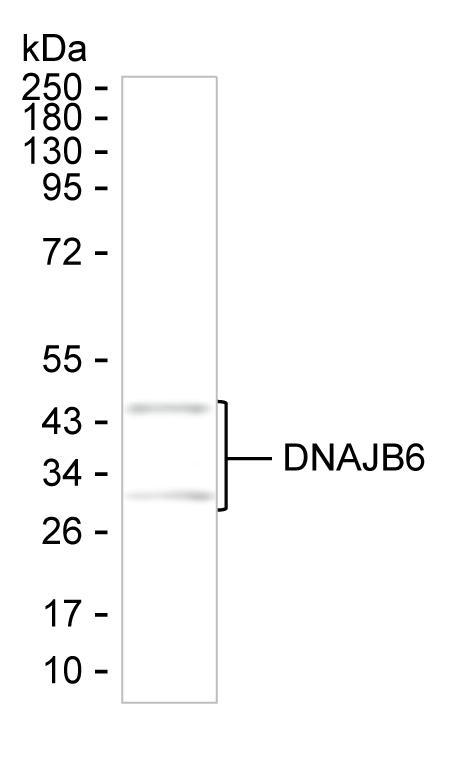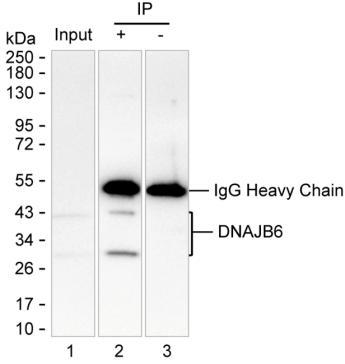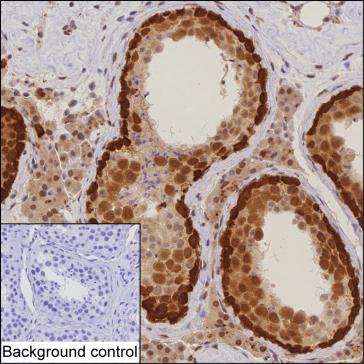


| WB | 咨询技术 | Human,Mouse,Rat |
| IF | 1/100-1/200 | Human,Mouse,Rat |
| IHC | 1/100-1/200 | Human,Mouse,Rat |
| ICC | 技术咨询 | Human,Mouse,Rat |
| FCM | 咨询技术 | Human,Mouse,Rat |
| Elisa | 咨询技术 | Human,Mouse,Rat |
| Host/Isotype | Mouse IgG2a |
| Antibody Type | Primary antibody |
| Storage | Store at 4°C short term. Aliquot and store at -20°C long term. Avoid freeze/thaw cycles. |
| Species Reactivity | Human |
| Immunogen | Purified recombinant fragment of human DNAJB6 |
| Formulation | Purified antibody in PBS with 0.05% sodium azide |
+ +
以下是3篇关于DNAJB6抗体的代表性文献及其摘要概括:
1. **文献名称**:*DNAJB6 suppresses tumor progression via regulating proliferation and metastasis in breast cancer*
**作者**:Zhang Y, et al.
**摘要**:该研究利用DNAJB6特异性抗体检测其在乳腺癌组织中的表达水平,发现DNAJB6低表达与肿瘤转移和不良预后相关,并通过体外实验证明DNAJB6通过抑制Wnt/β-catenin信号通路阻碍癌细胞增殖和侵袭。
2. **文献名称**:*DNAJB6 chaperone prevents amyloid formation of α-synuclein by stabilizing its non-toxic conformations*
**作者**:Månsson C, et al.
**摘要**:研究通过免疫共沉淀(使用DNAJB6抗体)和体外聚集实验,揭示DNAJB6作为分子伴侣直接结合α-synuclein,阻止其病理性淀粉样纤维形成,为帕金森病的治疗提供潜在靶点。
3. **文献名称**:*DNAJB6 is a novel prognostic marker in prostate cancer*
**作者**:Wang X, et al.
**摘要**:该团队开发了高特异性DNAJB6单克隆抗体,并在前列腺癌组织芯片中验证其表达,发现DNAJB6高表达与患者生存期延长显著相关,提示其可作为独立预后标志物及治疗靶点。
注:如需获取具体文献,建议在PubMed或Web of Science中通过标题/作者名检索。
×